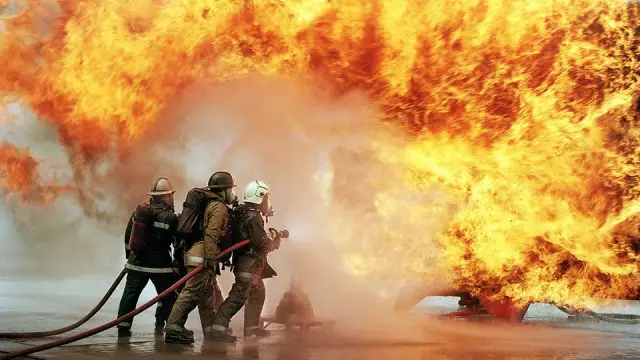In recent months, fire safety in India has been thrust into the spotlight due to several tragic incidents. Notably, the fire accident at a game centre in Rajkot has raised significant concerns about the adequacy of fire safety regulations and their enforcement. This incident, along with other devastating events such as the market fire in Pune and the hospital oxygen blast in Delhi, underscores the urgent need for stronger safety checks and clearer rules.
The Model Code for Fire Safety in India
India’s approach to fire safety is governed by the National Building Code (NBC), which serves as the central standard for fire safety measures. Published by the Bureau of Indian Standards (BIS) in 1970 and last updated in 2016, the NBC provides comprehensive guidelines on the general construction requirements, maintenance, and fire safety of buildings. Part 4 of the NBC specifically deals with fire safety and outlines detailed instructions on construction materials, electrical installations, and emergency evacuation procedures.
Despite these robust guidelines, compliance and enforcement remain significant challenges. Fire safety is a state subject in India, and the responsibility for fire prevention and safety lies with state governments. The ‘Model Building Bye Laws 2016’ issued by the Ministry of Housing and Urban Affairs guides states and Union Territories to frame their respective building bylaws, incorporating fire safety norms.
Data on Fire Accidents
According to the Accidental Deaths and Suicides in India (ADSI) report by the National Crimes Records Bureau (NCRB), 7,435 people lost their lives in over 7,500 fire accidents in 2022. These figures highlight the persistent and severe impact of fire accidents in India. Past tragedies like the Uphaar Cinema fire in 1997 and the Kumbakonam school fire in 2004 have not yet spurred adequate improvements, as similar incidents continue to occur with alarming frequency.
Key Fire Safety Rules Laid by NBC
The NBC specifies several key fire safety rules:
- Construction Materials: Use of non-combustible materials for construction, with a minimum 120-minute fire resistance rating for internal walls of staircase enclosures.
- Electrical Installations: Flame-retardant wiring and cabling, with proper separation and fire-stop materials.
- Emergency Systems: Mandatory emergency power systems, exit signage, fire alarm systems, and public address systems.
- Fire Zones: Demarcation of residential, educational, and institutional buildings to ensure they do not coexist with industrial and hazardous structures.
NDMA Guidelines on Fire Safety
The National Disaster Management Authority (NDMA) provides additional guidelines on fire safety, emphasizing the importance of maintaining minimum open safety spaces, protected exit mechanisms, and conducting evacuation drills. Key recommendations include:
- Do’s: Preparing fire escape plans, practicing regular drills, raising alarms, and using designated escape routes.
- Don’ts: Avoiding panic, not re-entering burning buildings, refraining from using elevators during fires, and cautiously opening doors/windows.
Compliance Challenges
Several challenges impede the effective enforcement of fire safety rules in India:
- Ignoring Fire Safety Rules: National guidelines are often not mandatory, leading to inconsistent enforcement. Even when mandatory, certifications can have loopholes.
- Underutilisation of Fire Safety Audits: Fire safety authorities are typically understaffed, resulting in infrequent audits and persistent fire hazards.
- Lack of Preparedness: Reports have criticized authorities for their inaction and failure to learn from past incidents, highlighting the need for better urban planning and building code adherence.
Way Forward
Addressing these challenges requires a multi-faceted approach:
- Legislative Reform and Enforcement: Enacting a uniform and mandatory national fire safety code, with stringent penalties for non-compliance and mandatory fire safety audits.
- Modernisation of Fire Services: Investing in upgraded firefighting equipment, training, and capacity building.
- Empowering Communities: Launching public awareness campaigns and integrating fire safety education into school curricula.
- Other Measures: Conducting regular mock drills, implementing fire-resistant materials, and encouraging advanced fire suppression systems.
By fostering a culture of safety and resilience, we can mitigate the devastating impact of fire accidents and save lives. Together, let’s prioritize fire safety and work towards a safer India.
For more information and resources on fire safety and emergency preparedness, visit HowToSurvive.in. Stay informed. Stay prepared.


